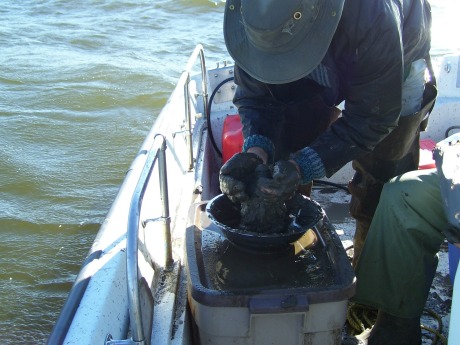Contaminates remaining in the sediment of the Miramichi River and its estuary are due to its land-use history. They may pose risks if disturbed. MREAC's analysis of sediment quality in 1993, 2002, 2005 and 2006 on the Napan Rivers and Upper Miramichi estuary, provide a partial picture of sediment quality. The upper estuary study (Parker 2006/07) is inconclusive but suggests that sediment quality may be improving. This could be due to upgrades in industrial process and improvements in municipal infrastructure, principally over the last decade. The other major factor appears to be the passage of time with reduced toxic inputs.
Information gaps remained on the lower estuary of the Miramichi River. An updated assessment would be valuable for the benefit of economic and social sectors of our community to provide a basis upon which to make decisions of utilization, development or disturbance within the estuary. Recent downturns and closures of Miramichi based industries has resulted in reductions of inputs into the Miramichi estuary.
These include:
- "the closure of Heath Steele Mine site (2000) and cessation of stockpiling ore at Miramichi wharves
- major process improvements in the pulp and paper industry and ground-wood mill
- closure and decommissioning of the pulp and paper kraft mill, 2005
- improved industrial processes in the OSB and plywood mills
- two high capacity and well functioning sewage treatment facilities for the city of Miramichi (1998 & 2006)
- sewage treatment improvements for several smaller municipalities (since 2000)
- remediation of fifty-five failing on-site septic systems within the watershed since 1995
- improvements in forest management and wood harvesting policy"

MREAC had opportunity in 2007/08, with funding provided by Science Linkage, to complete a more comprehensive analysis to better compare the different generations of sediment quality to determine the direction and scale of changes over time, and the relative risks inherent in disturbing the contaminants locked up in estuarine sediment. Ten sediment samples were collected in the lower estuary part of the Miramichi River and compared with the previous work in the upper estuary (1993 & 2002). A report was completed by Mr. Roy Parker, and some of his conclusions are:
- "Total polychlorinated bishenyls (PCBs) were not detected in any of the samples
- All samples had detectable concentrations of cadmium and exceeded the CCME ISQG
- Arsenic was detected in all but one sample, and seven of those sample exceeded the ISQG
- Chromium, copper and zinc were detected in all samples and did not exceed the ISQG
- Lead was detected in 8 of the 10 samples and within acceptable limits
- Titanium was not detected
- Mercury was detected in all but one sample and did not exceed ISQG
- No samples were toxic according to the Microtox Solid Phase test
- There was a general pattern of lower levels of organic contaminants, trace metals and mercury in the 2007 samples from the lower estuary and Miramichi Bay compared to the results of the 1993 and 2002 surveys in the upper estuary
- Cadmium concentrations were higher in the sediment samples from the lower estuary and the Bay compared to the earlier results from the upriver surveys"



